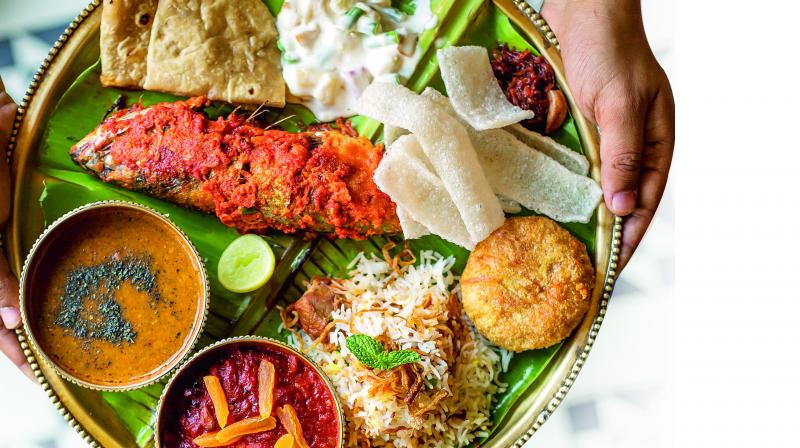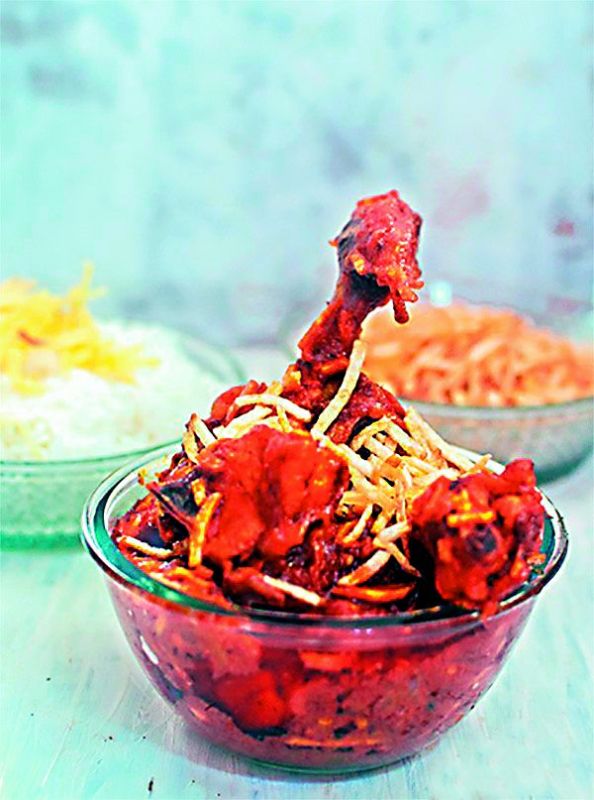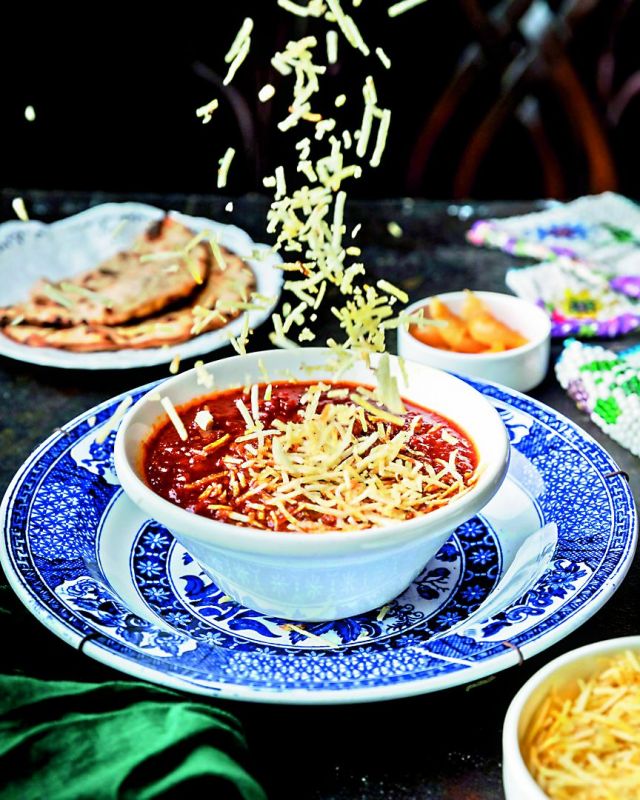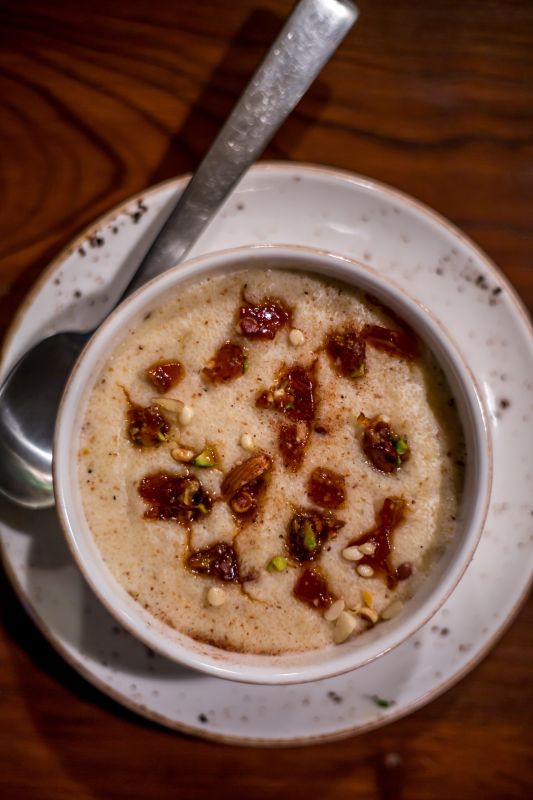Majja ni life!

Navroz is celebrated on August 17. “It’s that time of the year, when we pray for the departed souls, five days before the new year. We keep a vase in their name and fill it with fresh flowers that are replaced everyday. Food is distributed in their name at the Agiary which smells of fresh roses and lillies and sandalwood incense — it makes you feel so good and blessed,” says Delzeen Watcha Mistry, Brand Consultant and Co-founder, Hormaz Marketing and Brand Consultancy.
“We start our day of the New Year with something sweet; sagan ni sev (brown, sweet vermicelli), mitthu dahi (sweet yoghurt) or ravo (sweet semolina). Lunch is usually ordered from a Parsi caterer — Mutton Dhansak, Chicken Farcha, Patra ni macchi, saas ni macchi and Salli boti amongst a host of other things. Evenings are for time with family — going out for cocktails, or to watch a play/movie or out for dinner. The religion forces no compulsion. It’s all about the family bonding,” says Mistry.
Interestingly, the Parsi cuisine is a perfect amalgamation of Iranian, Gujarati, British, even Portuguese influences. The spice is gentle (Iran), sometimes sweet (Gujrat), there’s a good use of vinegar (portugal) and they love their eedu or eggs and bechamel (British).
Hoshang Garivala, 50 who lives in Gadchibowli is primarily from Mumbai and orders Parsi food from Sodabottleopenerwala in Jubilee Hills and invites his friends over. “The Zorastrian club in Secunderabad is where the members of the community meet. It hosts a gala Parsi New Year dinner, where caterer Abad Wadia serves a bhonu (full Parsi fare). There is an Agiary and a Parsi dharmsala in that area too,” says Garivala.
When you say Parsi New Year, Food plays an important role and the first dish that comes to mind is Dhansak. But not many are aware that we don’t prepare Dhansak during auspicious occasions, it is always had on the fourth day after the death. so we don’t cook. the New Year is incomplete without the mention of delicacies like sali gosht and patra-ni-machchi. We hardly get any holidays, traditionally we have just two celebrations — the Iranian new year, also associated with Zoroastrians, celebrated over the spring equinox on March 21 and the Parsi New Year, which comes at the end of 10 days of departed souls on august 17. So, its special for us
— Ashoo Saam Chinoy, secretary, Parsi school
Going to our Aatish Behram and saying our prayers together with the family, doing the sagan (applying the red dot and rice on the forehead) at home, having a friends of the family lunch for about 35-40 people and food is catered from the family caterer. In the evening, we watch a play — mostly a Parsi one. I love our Chicken Pulao Dal. It’s one day when I don’t bother with healthy eating. The day is spent with with family, friends and anecdotes as we talk of times gone by — funny stories of growing up. Parsis have the most hilarious way of narrating such stories — peppering them with colourful language,”
— Nawaz Modi Singhania, fitness expert
Popular Parsi dishes
- Mutton Dhansak: The meat is cooked in a spicy mixed lentil gravy, served with brown rice.
- Patra ni Machhi: Fish stuffed or smeared with green coconut chutney and wrapped in a banana leaf, then steam cooked.
- Saas ni Machhi: Pomfret fillets cooked in white sauce, served with yellow rice.
- Kolmi no Patio: Shrimp in spicy tomato curry
- Akuri: Scrambled eggs, cooked in spices.
- Lagan nu custard: A sweet dish that is cooked or baked using milk, cardamom, nutmeg, vanilla essence, cream, and butter.
Jardaloo Marghi
Ingredients:
- Onion: 700 gm
- Tomato: 500 gm
- Oil: 80 gm
- Star anise: 3 gm
- Green cardamom: 6-8pcs
- Cinnamon sticks: 2-3 pcs
- Salt to taste
- Dry apricot (jardaloo): 90 gm
- Chicken with bone: 500 gm
- Kolah vinegar: 10 gm
- Jaggery: 10 gm
- Fresh coriander: 10 gm
- Coriander powder: 15 gm
- Cumin powder: 10gm
- Turmeric powder: 5 gm
- Parsi Sambhar masala: 15 gm

Method:
- In a pan, add oil and saute the onions with the whole spices. Then add the powdered spices and cook. Add the chicken and saute well. Add the tomatoes and cook till they all soften.
- Soak the dried apricot (few hours before) and add after the chicken is cooked. Let the dish cook further. Then add the coriander and kolah vinager. Finish with a pinch of jaggery. Serve hot with pav or roti.
Salli Boti
Ingredients:
- Mutton pieces: 1 kg
- Onions: 4-5 nos
- Tomatoes, blanched: 4-5
- Red chilli powder: depending on your taste
- Garlic: 1 large
- Vinegar: 2 tbsp
- Green chillies: 4-5 nos
- Ginger garlic paste: 2 tbsp
- Turmeric: ¼ tsp
- Red chilli paste: 2 tsp
- Garam masala: 2 tsp
- Jaggery: ½ tsp
- Fried grated potatoes: 1 cup

Method
- Make a paste of red chillies, garlic and vinegar. Marinate mutton pieces with ginger-garlic paste, turmeric and red chilli powder and the vinegar paste.
- Fry the onions and put green chillies and add the marinated mutton, saute till the water dries up. Grind the blanched tomatoes and add into the mutton and cook further. Then add jaggery and cook till mutton is tender. Garnish with salli.
Chicken Farcha
Ingredients:
- Chicken legs or boneless chicken: 1 kg
- Ginger-garlic paste: 3 tbsp
- Turmeric: ¼ tsp
- Tandoori chicken masala: 3 tbsp
- Pepper: 1 tsp
- Eggs: 2 nos
- Bread crumbs: 1 tbsp

Method:
Marinate chicken in salt, pepper, pinch of turmeric and tandoori chicken masala. Keep it in the fridge for two-three hours. Pour a little oil into a cooker and saute the chicken. Add sprinkles of water and then pressure cook it for four-five minutes on low flame. Once cooled, open the cooker and let the chicken cool down. In a non-stick pan, heat oil for deep frying on medium flame. Take two eggs and beat them well till fluffy. Add salt, pepper and bread crumbs or rava. Mix well. Dip the chicken pieces in it and fry them.
— Recipie courtesy Delzeen Watcha
I love my Parsi food that I make regularly at home. These are the foods I grew up eating and they are my comfort foods. Though I follow a healthy eating pattern, my home-made parsi food does not come in the way as they are super healthy and super tasty. My favorites are: Ravo, its a sweet made with sooji and milk and sugar. I make with home-made date syrup, which is healthier than using sugar. Patra Ni Pachi, which is a delicacy, Its usually made with Pomfret fish. The fish is marinated in a green coriander chutney and then wrapped in a banana leaf and steamed. and Dhansak, which is a dal made with mutton and served with Brown rice (caramalized) and a bowl of kachumber (salad) to the side.
— Dinaz Vervatwala, wellness coach and motivational speaker
My favorite Parsi New Year memory is my mom’s homemade Ravo, a sweet semolina pudding — the aroma is all over the house. And then in the evening dressing up in a saree and going to the Agiary. Enjoying a hot jardaloo Marghi with the family on Parsi new year is fun because it’s sweet, sour and tangy! Parsis love this flavour.”
— Anahita Dhondy, Chef-Partner, Sodabott leopenerwala

